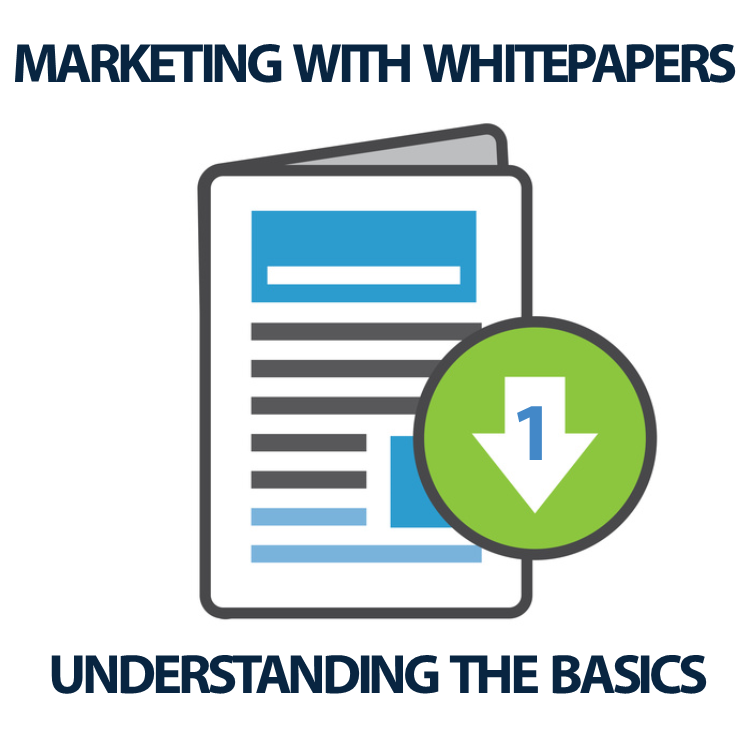JoomConnect Blog
Marketing with Whitepapers (1 of 3) - Understanding the Basics
If you’ve kept up with the latest marketing news over the years, you may have heard claims that the whitepaper is dead. But actually, whitepapers hold a LOT of value for B2B companies, especially businesses that are in the technology sector. For managed service providers, whitepapers are too powerful to ignore.
Our Marketing with Whitepapers blog series will help you understand what exactly a whitepaper is and walk you through the process of writing and promoting one through your marketing efforts. To kick it off, part 1 of this blog series will explain what a whitepaper is, and the value that they can bring to your business if you incorporate them into your marketing.
What is A Whitepaper?
B2B whitepapers, known by many other names such as white papers, e-books, special reports, consumer reports, and industry reports, are high-level, formally written marketing documents that target business decision makers. They tend to discuss products, service, software, and methodologies in a way that helps the decision maker better understand an issue or solve a problem. B2B whitepapers tend to include:
- Outside research from secondary sources on the subject matter
- A very detailed analysis with supporting tables, charts, and graphs
- A link back to your company and related service offering(s)
Some of this may sound similar to what a case study is. But actually, they’re quite different - if they are created properly.
Whitepapers should be abstract, presale documents that describe a technical solution as a whole, and are often more lengthy documents (anywhere from 3 pages to about 15) that often utilize secondary resources to support the overall argument. They can effectively target people at all stages of the funnel.
Case studies, on the other hand, teach by example by showcasing how a product or service helped one of your clients in the real world. These are best suited for audiences who are at the top or middle of the funnel, and are much shorter in length (anywhere from 1 to 3 pages).
You typically see a few different whitepaper structures for B2B companies:
- Problem-solution whitepapers use facts and logic to present a solution to a problem that the target audience faces. The solution is directly related to a product or service offering that the company sells.
- Benefits whitepapers describe the benefits from a certain product or service offering. Benefits whitepapers for non-technical audiences are typically called business benefits whitepapers, while very technical whitepapers designed to reach people at later stages of the buying cycle are referred to as technology benefits whitepapers.
- Product comparison whitepapers weigh the pros and cons of different competing solutions or vendors, while presenting the preferred solution (one that the company offers) or decision in a more positive, favorable light.
Why Whitepapers?
Based on what you’ve already read, you probably have already gathered that putting together a whitepaper is a LOT of work, even more so than most other marketing efforts. So, why are companies still using them to market? This might help explain things a bit:
- In 2017, 71% of B2B marketers used whitepapers / e-books in their content marketing, up 6% from the previous year
- 83% of business decision makers say that whitepapers are moderately to extremely influential in their purchase decisions
- 79% of B2B buyers listed whitepapers as the material they were most likely to share with colleagues
- 76% of B2B buyers are willing to share their name and email address in exchange for a whitepaper
And, as a managed service provider, whitepapers are even more valuable to you than other B2B companies: 76% of decision makers have read a whitepaper to help them evaluate a technology purchase. Decision makers - especially younger ones - love them because they are not overly sales-y like many other marketing materials are. Instead, they are focused on educating the reader on a particular subject matter, and letting them come to a conclusion based on what they read.
Even though they are a lot of work to put together, these deliverables are worth investing time and effort in.
We’re Not Finished Yet
Stay tuned for the next part of our Marketing with Whitepapers blog series, where we will cover how to write and design a whitepaper. In the meantime, check out one of our older whitepapers covering Inbound versus Outbound marketing.



